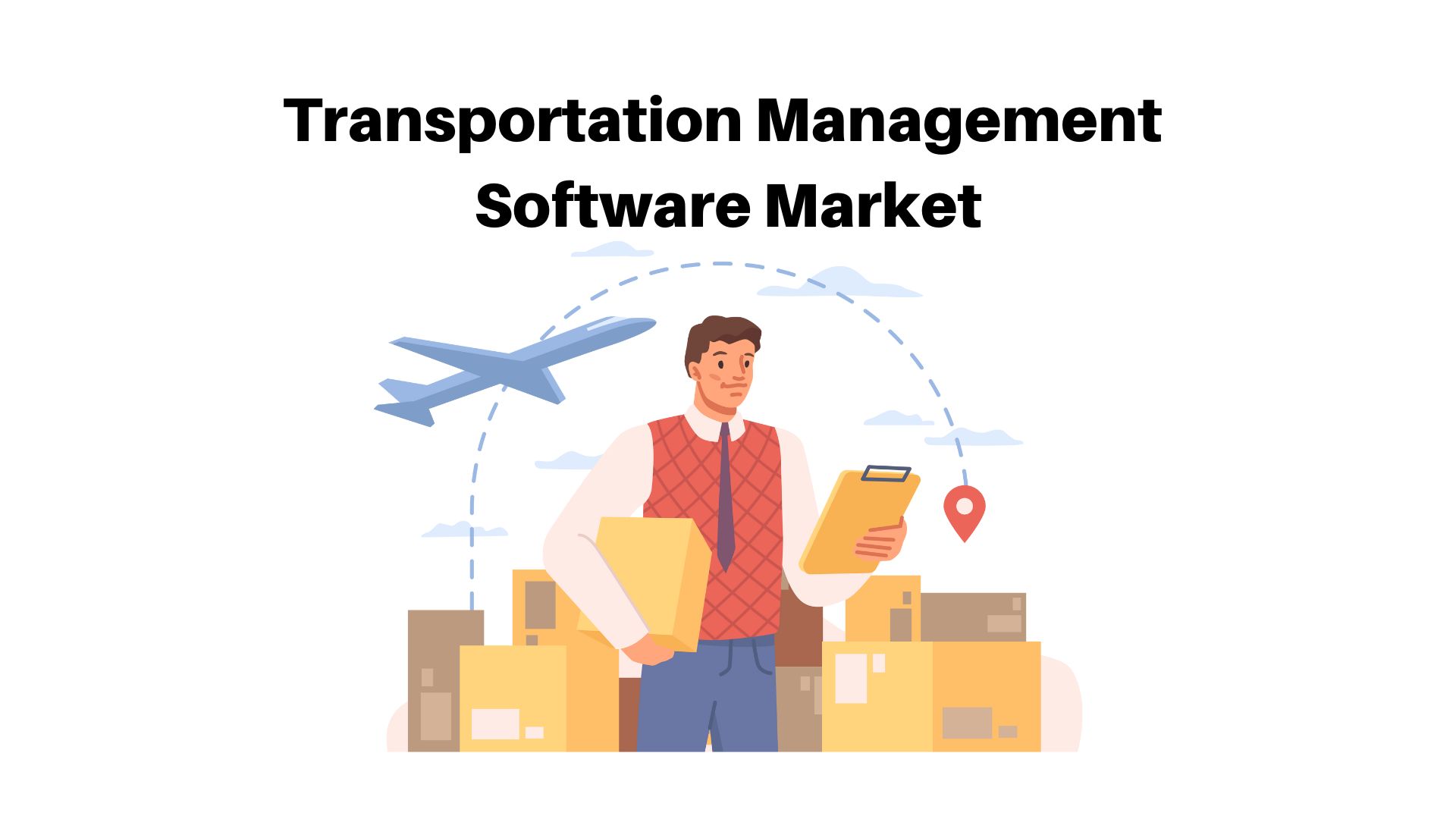Transportation Management Software Market Expected To Reach CAGR Value Of Over 19.1% By 2032

Page Contents
Market Overview
Published Via 11Press: The Transportation Management Software Market size is expected to be worth around USD 64.3 Bn by 2032 from USD 11.7 Bn in 2022, growing at a CAGR of 19.1% during the forecast period from 2022 to 2032.
The Transportation Management Systems (TMS) market is a rapidly growing industry that has revolutionized the way businesses manage their transportation needs. TMS solutions have become essential for companies looking to optimize their supply chain operations, reduce costs and improve customer satisfaction. The TMS market includes software solutions that help businesses automate processes related to shipping, logistics, fleet management, and warehouse operations.
With the rise of e-commerce and globalization, transportation has become a critical component of business operations across industries. The TMS market has responded to this demand by providing a range of innovative solutions that integrate with existing enterprise resource planning systems (ERPs). This integration enables companies to streamline their transportation and logistics processes while minimizing manual intervention and errors.
The TMS market is poised for significant growth in the years ahead as more businesses recognize the benefits of these technologies.
Request For Sample Report Here: https://market.us/report/transportation-management-software-market/request-sample/

Key Takeaways
- The global Transportation Management Systems (TMS) market is expected to witness rapid expansion over the forecast years due to growing demand for efficient and cost-effective transport solutions.
- TMS (Transport Management System) is a software solution designed to assist shippers in optimizing their transportation operations, cutting costs, and increasing visibility and control over the entire supply chain.
- The market is being driven by an increase in demand for cloud-based TMS solutions, which offer greater versatility, scalability and cost efficiency compared to on-premise alternatives.
- The Asia Pacific region is expected to experience rapid growth in the TMS market, driven by increasing adoption of TMS solutions by various industries, particularly those situated in emerging economies such as India and China.
- The TMS market is highly competitive, with several major players dominating it: MPO Supply Chain Suite, JDA Transportation & Logistics Management, Oracle, SAP, Descartes MercuryGate TMC AscendTMS Infor TMS and Transplace.
- The market for TMS solutions has seen the emergence of several new players, driven by demand for cutting-edge solutions and the growing adoption of cloud-based TMS systems.
- The key trends in the TMS market include an increasing adoption of artificial intelligence (AI) and machine learning (ML) technologies to enhance TMS functionality, rising demands for real-time visibility and control over transportation operations, as well as an increasing focus on sustainability and green logistics.
Regional Analysis
- The North American TMS market is the largest regional market, driven by numerous large shippers and an excellent logistics infrastructure. The United States leads this region as its most significant market.
- The European TMS market is the second-largest regional market, driven by an increasing need for supply chain visibility and control. Germany, the United Kingdom, and France are the top three markets within this region.
- The Asia Pacific TMS market is experiencing rapid growth due to the increasing need for logistics and supply chain solutions in the region. China, India, and Japan are the three largest markets within this region.
- The Latin American TMS market is growing steadily, driven by an increasing need for logistics and supply chain solutions in the region. Brazil, Mexico, and Argentina are the three largest markets within this region.
- The Middle East and Africa TMS market is relatively small, it is growing steadily due to increasing demand for logistics and supply chain solutions in the region. Saudi Arabia, South Africa, and the United Arab Emirates are the three largest markets within this region.
- Overall, the TMS market is a global opportunity with significant growth potential across all regions due to an increasing need for supply chain visibility, control, and optimization.
Browse the summary of the report and Complete Table of Contents (TOC): https://market.us/report/transportation-management-software-market/table-of-content/
Drivers
- Growing Demand for Efficient and Cost-Effective: Transportation Solutions Shippers are seeking ways to optimize their operations, reduce expenses, and enhance supply chain visibility and control through the implementation of TMS solutions. Increased Adoption of Cloud-Based Transportation Management Solutions, Cloud-based TMS solutions have seen an exponential rise in adoption due to their flexibility, scalability, and cost-effectiveness compared to on-premise solutions. Cloud-based TMS provides real-time visibility and control over transportation operations which makes it simpler for shippers to manage their transport activities effectively.
- Rising e-commerce Activities: The expansion of e-commerce is driving demand for Transportation Management Solutions (TMSs), as companies need to effectively manage their transport operations to guarantee timely deliveries of products to customers. TMS solutions can assist e-commerce firms to optimize their transport processes and reduce costs. Advancements in Technology, Technological advances such as the Internet of Things (IoT), artificial intelligence (AI), and machine learning (ML) are propelling the TMS market. TMS solutions that incorporate these technologies can help shippers improve transportation efficiency, lower costs, and enhance supply chain visibility and control.
- Globalizing Supply Chains: As global supply chains become more interconnected, demand for TMS solutions to help manage operations across different regions and countries are growing. TMS solutions enable shippers to optimize their transportation strategies across different geographies, cut costs associated with transport, and improve supply chain visibility and control. Growing Awareness About Sustainability and Green Logistics, As awareness about sustainability and green logistics increases, demand for transportation management systems (TMS) that can help shippers reduce their carbon footprint and operate more sustainably is on the rise. TMS solutions enable shippers to optimize transportation routes, reduce empty miles, and opt for more sustainable modes of transport like rail or ocean freight.
Restraints
- High Implementation Costs: Implementing TMS solutions can be expensive, particularly for small and medium-sized enterprises (SMEs) which may not have the resources to invest in such technology. High implementation costs could act as a deterrent to growth for the TMS market. Lack of Skilled Personnel
Implementing and managing these TMS systems necessitate skilled personnel with knowledge in transportation and logistics – an acute shortage which could significantly constrain growth within this space. - Integration issues with legacy systems: Many shippers rely on legacy systems for transportation management, and integrating these with TMS solutions can present a challenge. Integration issues could potentially thwart the adoption of TMS solutions. Security & privacy worries TMS solutions handle sensitive data such as transportation routes, delivery schedules, and customer information; security & privacy issues may pose major deterrents when considering whether to invest in TMS solutions – especially within highly regulated industries.
- Resistance to Change: Some shippers may be resistant to change and prefer traditional transportation management methods. This aversion could be an impediment in adopting TMS solutions. Dependence on Third-Party Logistics (3PL) Providers, Many shippers outsource their transportation operations to 3PL providers who may use their own transportation management systems. Reliance on 3PL providers can further delay adoption of TMS solutions.
Opportunities
- Shippers' growing need for real-time visibility and control: Shippers increasingly demand real-time insight and oversight into their transportation operations. TMS solutions that offer real-time tracking and monitoring can help shippers optimize their transport processes while improving supply chain visibility and management. Integration with Other Supply Chain Management Solutions, TMS solutions can be integrated with other supply chain management tools, such as warehouse management systems (WMS) and enterprise resource planning (ERP), to form a comprehensive supply chain management system. This integration gives shippers an enhanced view of their supply chains and boosts operational efficiency.
- Expansion into Emerging Markets: The TMS market presents opportunities for expansion into developing regions such as Asia Pacific, Latin America, and the Middle East. These regions possess considerable growth potential due to escalating demand for transportation management solutions. Focus on sustainability and green logistics There is an increasing emphasis on sustainability and green logistics, leading to high demand for TMS solutions that help shippers reduce their carbon footprint and operate more sustainably. TMS solutions can assist shippers to optimize transportation routes, minimizing empty miles, and selecting more sustainable transportation modes.
- Adoption of Advanced Technologies: The adoption of cutting-edge technologies like artificial intelligence (AI), machine learning (ML), and the Internet of Things (IoT) presents significant growth prospects in the Transportation Management System (TMS) market. TMS solutions that incorporate these innovations can assist shippers to optimize their transportation operations while improving supply chain visibility and control. Increasing Demand for Mobile-Based Transportation Management Solutions, As more mobile devices, such as smartphones and tablets, become commonplace, the demand for mobile-based TMS solutions has grown significantly. These systems give shippers the power to manage their transport operations on the go and are especially beneficial to small and medium-sized enterprises (SMEs).
Challenges
- Intense competition: Competition in the TMS market is fierce. Large players dominate it, making it difficult for smaller firms to compete with established players when it comes to pricing or brand recognition. Furthermore, due to a fragmented marketplace with many small and medium-sized vendors, finding one that meets your needs may prove challenging and cause confusion within the sector.
- Complex implementation: The implementation of TMS solutions can be complex and time-consuming. It can involve integrating multiple systems and data sources, which can be challenging for shippers without a dedicated IT department or technical expertise. Limited interoperability, Interoperability between TMS solutions and other supply chain management solutions, such as warehouse management systems (WMS) and enterprise resource planning (ERP) systems, can be limited. This can make it difficult for shippers to create a comprehensive supply chain management solution.
- Data quality issues: TMS solutions rely heavily on accurate and timely data, and poor data quality can negatively impact the performance of TMS solutions. Shippers may need to invest in data cleansing and data quality management processes to ensure that the data used by TMS solutions are accurate and reliable. Resistance to change, Some shippers may be resistant to change and may prefer to continue using traditional transportation management methods. This resistance to change can make it challenging for TMS vendors to promote their solutions and convince customers of the benefits of TMS solutions.
- Cybersecurity risks: TMS solutions deal with sensitive data, such as transportation routes, delivery schedules, and customer information, and are therefore vulnerable to cyberattacks. TMS vendors need to ensure that their solutions are secure and that they have adequate cybersecurity measures in place to protect their customers' data.
Recent Development
- March 2022: Data cloud company Snowflake and Blue Yonder, a provider of digital supply chains and omnichannel fulfillment, announced a partnership that will transform supply chain management's ability to access heterogeneous data sources. Blue Yonder's Luminate Platform powered by Snowflake is available to retailers, manufacturers, and third-party logistics providers (3PLs). This solution helps them better anticipate, prevent, and address disruptions throughout their business, reducing risks and addressing the growing supply chain challenges.
- February 2022: RHI Magnesita is the largest provider of refractory materials in the world. To support its growth, and technological modernization, Oracle Fusion Cloud Transportation Management (a component of Oracle Fusion Cloud Supply Chain & Manufacturing) was chosen. All of RHI Magnesita’s shipping facilities now use a single integrated transport management system to manage all logistics operations. Oracle Transportation Management allowed the company to reduce costs, improve service standards and automate processes to make its logistics operations more efficient.
Report Scope
| Report Attribute | Details |
| The market size value in 2022 | USD 11.7 Bn |
| Revenue forecast by 2032 | USD 64.3 Bn |
| Growth Rate | CAGR Of 19.1% |
| Regions Covered | North America, Europe, Asia Pacific, Latin America, and Middle East & Africa, and the Rest of the World |
| Historical Years | 2017-2022 |
| Base Year | 2022 |
| Estimated Year | 2023 |
| Short-Term Projection Year | 2028 |
| Long-Term Projected Year | 2032 |
Key Market Segments
Type
- Route Optimization
- Mode & Carrier Selection
- Traffic Analytics
- Track & Trace
- Others
Application
- Traffic Directory
- Parking Information
- Others
Key Market Players included in the report:
- MPO Supply Chain Suite
- JDA Transportation & Logistics Management
- Oracle
- SAP
- Descartes
- MercuryGate
- TMC
- AscendTMS
- Infor TMS
- Transplace
Frequently Asked Questions
What is the market study period?
The Transportation Management Software Market is studied from 2017 – 2032.
What is the growth rate for the Transportation Management Software Market?
The Transportation Management Software Market is growing at a CAGR of 19.1%Which region experiences the highest rate of growth in the Transportation Management Software Market?
Asia Pacific is growing at the highest CAGR over 2022- 2032.
Which region is the largest in the Transportation Management Software Market?
Europe holds the highest share in 2022.
Who are the major players in the Transportation Management Software Market?
MPO Supply Chain Suite, JDA Transportation & Logistics Management, Oracle, SAP, Descartes, MercuryGate, TMC, AscendTMS, Infor TMS, Transplace
The team behind market.us, marketresearch.biz, market.biz and more. Our purpose is to keep our customers ahead of the game with regard to the markets. They may fluctuate up or down, but we will help you to stay ahead of the curve in these market fluctuations. Our consistent growth and ability to deliver in-depth analyses and market insight has engaged genuine market players. They have faith in us to offer the data and information they require to make balanced and decisive marketing decisions.



